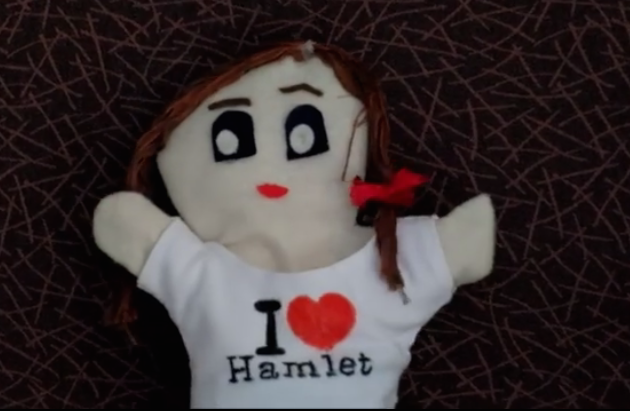Sock ‘n’ Buskin opened their production of Rosencrantz and Guildenstern are Dead on March 29 at the Carleton University Art Gallery, described on their Facebook page as being kind of like “if Shakespeare and Jim Henson did coke together in an art gallery.”
The Charlatan talked to Kevin MacDonald about the challenges of directing and the joys of puppets.
The Charlatan (TC): Is this your first time directing?
Kevin MacDonald (KM): Yeah, this is my first time ever directing anything, actually. I’ve been involved with the company before doing a variety of shows. I did Rent in my first year, then I was in Bonnie and Clyde, and I assistant directed The Mouse That Roared, actually, but this is my first time in the big boy’s chair.
TC: This must be exciting then. How has your experience been throughout the directing process?
KM: It’s been different from what I experienced as an assistant director last year for The Mouse That Roared.
We had somewhere around 20 people in the cast and for Rosencrantz and Guildenstern are Dead we only have 12. It’s a little bit more minimalist—there are fewer set changes so I get to work on the personal level more than the technical level. It’s good, it’s a change of pace, I suppose.
TC: Where did the idea to use puppets come from in the first place?
KM: Cassie [Nagy], the co-assistant director, was actually just sitting in the auditions with me and she goes “wouldn’t it be interesting to incorporate puppets in some way into this production” . . . I was actually struggling when I first agreed to do the show because I wanted to add something that made it clear whenever Rosencrantz and Guildenstern had to switch from free verse to iambic pentameter.
I was thinking maybe a sound cue or a lighting cue, but that was too tacky. Usually costuming is one of the last things you do in a show, but I was like one of the first things we need to do is get together and have a puppet-making party.
TC: Do you think with this production and with The Crucible being done in a goth light this year, Sock ‘n’ Buskin is trying to do different theatre?
KM: I think we’ve always had an interest in either doing things that other people wouldn’t normally do, like The Mouse That Roared last year, or put a new spin on things that have been already done to death.
I think Faustus was a good example of that, because it was in a small, more intimate setting and wasn’t dead set on being Elizabethan.
The Crucible was a great example as well—with the gothic aesthetic—and really this whole year has been new for Sock ‘n’ Buskin, because this is the most shows we’ve ever done in one season. I think that The Crucible definitely opened up some gateways and encouraged people to think more outside the box and I hope that there are more people who are willing to step outside of their comfort zone and pitch more creative ideas in the coming years.
TC: From my understanding of the play, it’s a kind of mix between Waiting for Godot and Shakespeare, two things that can be very difficult for the audience to understand. What are some of the ways that you try and bring the audience into what’s going on?
KM: I think using the puppets as surrogates, I encouraged people to be very deliberate with what they do, not to be obvious or specifically say what they’re doing but to bring out the subtle bits a little bit, to play up for laughs what is supposed to be funny.
When you read Shakespeare, you go, “I don’t fully understand what I’m reading,” but when you see Shakespeare, even if you don’t exactly know what they’re saying, you can understand the meaning behind it and what’s being communicated because of the expressiveness and the talent of the actors.
I kept telling them that 90 per cent of communication or more is nonverbal and that the words are only a small part . . . As far as the absurdism with Waiting for Godot and Tom Stoppard and all that, I don’t know—I just told them to go nuts with it.






